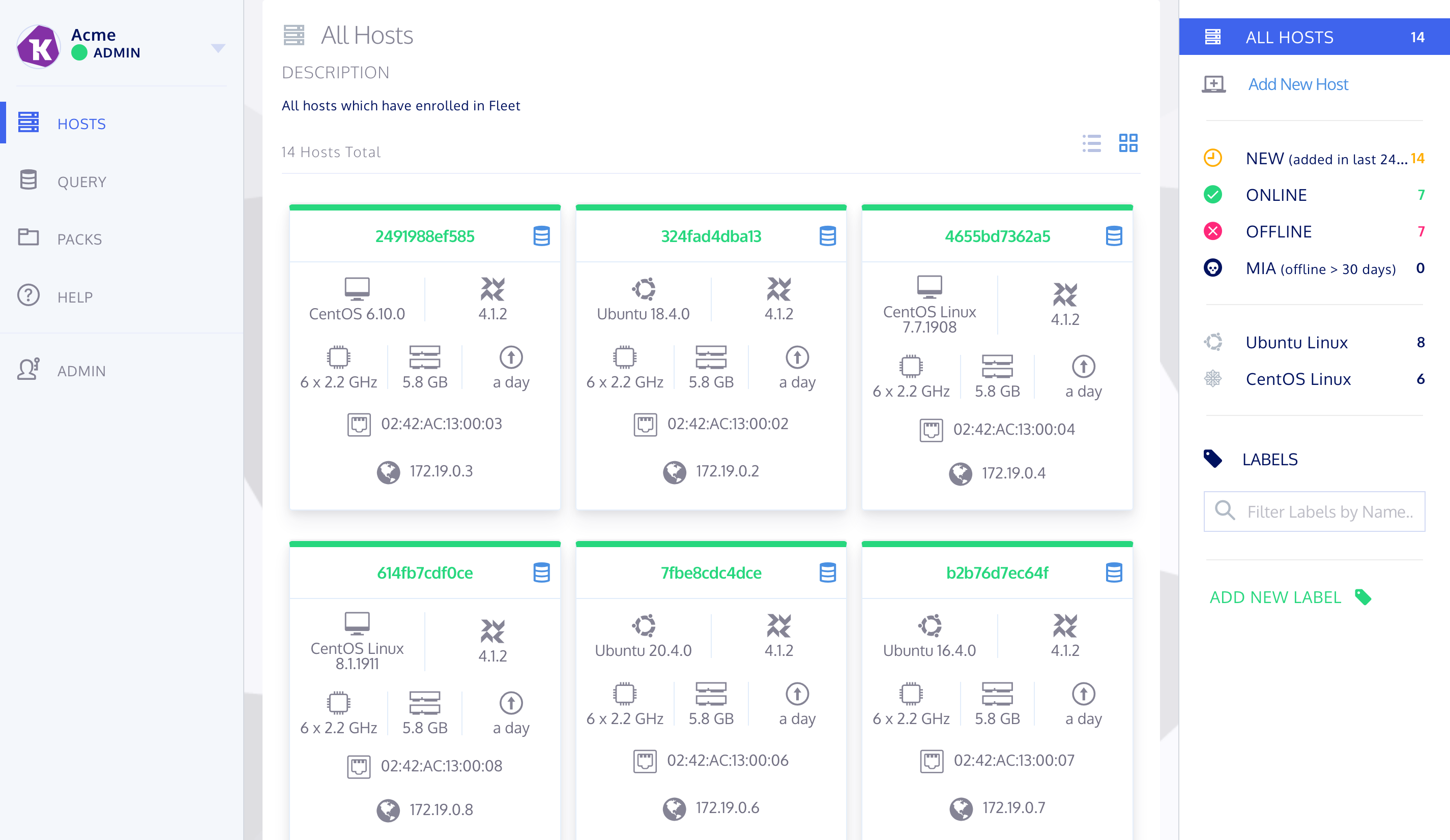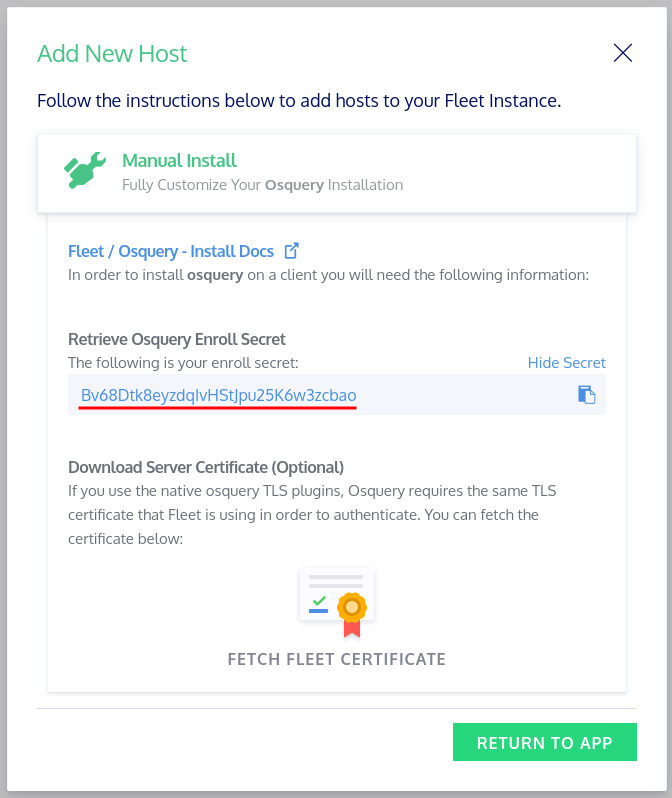 LinuxBlog.xyz
LinuxBlog.xyz September 11, 2020 - Patrick Kerwood
Kolide Fleet + OS Query
A Docker Compose configuration example and a short how-to on getting Kolide Fleet and osquery up and running using the Fleet REST API.
Fleet has a nice dashboard that enables you to do live queries, and effective management of osquery infrastructure. All you need on the clients is OS Query installed.

# Docker Compose
Below is the Docker Compose you need to setup Fleet. As ususal it includes the configuration needed to use with Traefik. Configure it to fit your needs.
version: '3.8'
volumes:
kolide-mysql:
networks:
traefik-proxy:
external: true
fleet:
services:
mysql:
image: mysql:5.7
container_name: fleet-mysql
restart: unless-stopped
volumes:
- kolide-mysql:/var/lib/mysql
command: mysqld --slow_query_log=1 --log_output=TABLE --log-queries-not-using-indexes --event-scheduler=ON
environment:
MYSQL_ROOT_PASSWORD: toor
MYSQL_DATABASE: kolide
MYSQL_USER: kolide
MYSQL_PASSWORD: kolide
expose:
- 3306
networks:
- fleet
fleet:
image: kolide/fleet:2.6.0
container_name: fleet
restart: unless-stopped
command: sh -c "/usr/bin/fleet prepare db && /usr/bin/fleet serve"
environment:
- KOLIDE_MYSQL_ADDRESS=mysql:3306
- KOLIDE_MYSQL_DATABASE=kolide
- KOLIDE_MYSQL_USERNAME=kolide
- KOLIDE_MYSQL_PASSWORD=kolide
- KOLIDE_REDIS_ADDRESS=redis:6379
- KOLIDE_LOGGING_JSON=true
- KOLIDE_SERVER_TLS=false
- KOLIDE_AUTH_JWT_KEY=changeme
networks:
- traefik-proxy
- fleet
labels:
- traefik.enable=true
- traefik.http.services.fleet.loadbalancer.server.port=8080
- traefik.http.routers.fleet.rule=Host(`fleet.example.org`)
- traefik.http.routers.fleet.tls.certresolver=le
- traefik.http.routers.fleet.entrypoints=websecure
- traefik.docker.network=traefik-proxy
redis:
container_name: fleet-redis
restart: unless-stopped
image: redis:6.0.5-alpine
expose:
- 6379
networks:
- fleet
# Install and configure OS Query on the client
Time to setup the client.
Go to https://osquery.io/downloads/ (opens new window). At the bottom under "Alternative Install Options" you will find commands to install OS Query. Follow the instructions for your OS.

The above will install osqueryctl, osqueryd and osqueryi.
Next, create the file /etc/osquery/osquery.flags and paste in the below lines. Remeber to change the tls_hostname to what ever you configured with Traefik.
--enroll_secret_path=/etc/osquery/fleet_secret
--tls_hostname=fleet.example.org
--host_identifier=uuid
--enroll_tls_endpoint=/api/v1/osquery/enroll
--config_plugin=tls
--config_tls_endpoint=/api/v1/osquery/config
--config_refresh=10
--disable_distributed=false
--distributed_plugin=tls
--distributed_interval=10
--distributed_tls_max_attempts=3
--distributed_tls_read_endpoint=/api/v1/osquery/distributed/read
--distributed_tls_write_endpoint=/api/v1/osquery/distributed/write
--logger_plugin=tls
--logger_tls_endpoint=/api/v1/osquery/log
--logger_tls_period=10
After logging in to the Fleet WebUI and hitting the "Add New Host" button, you will be presented with an "Enroll Secret", like in the screenshot below.

Create the file /etc/osquery/fleet_secret containing only the enroll secret.
Bv68Dtk8eyzdqIvHStJpu25K6w3zcbao
Enable and start the osqueryd daemon.
systemctl enable osqueryd
systemctl start osqueryd
Your client shoud now be visible in Fleet.
# References
- https://www.kolide.com/fleet/ (opens new window)
- https://linuxblog.xyz/posts/traefik-2-docker-compose/ (opens new window)